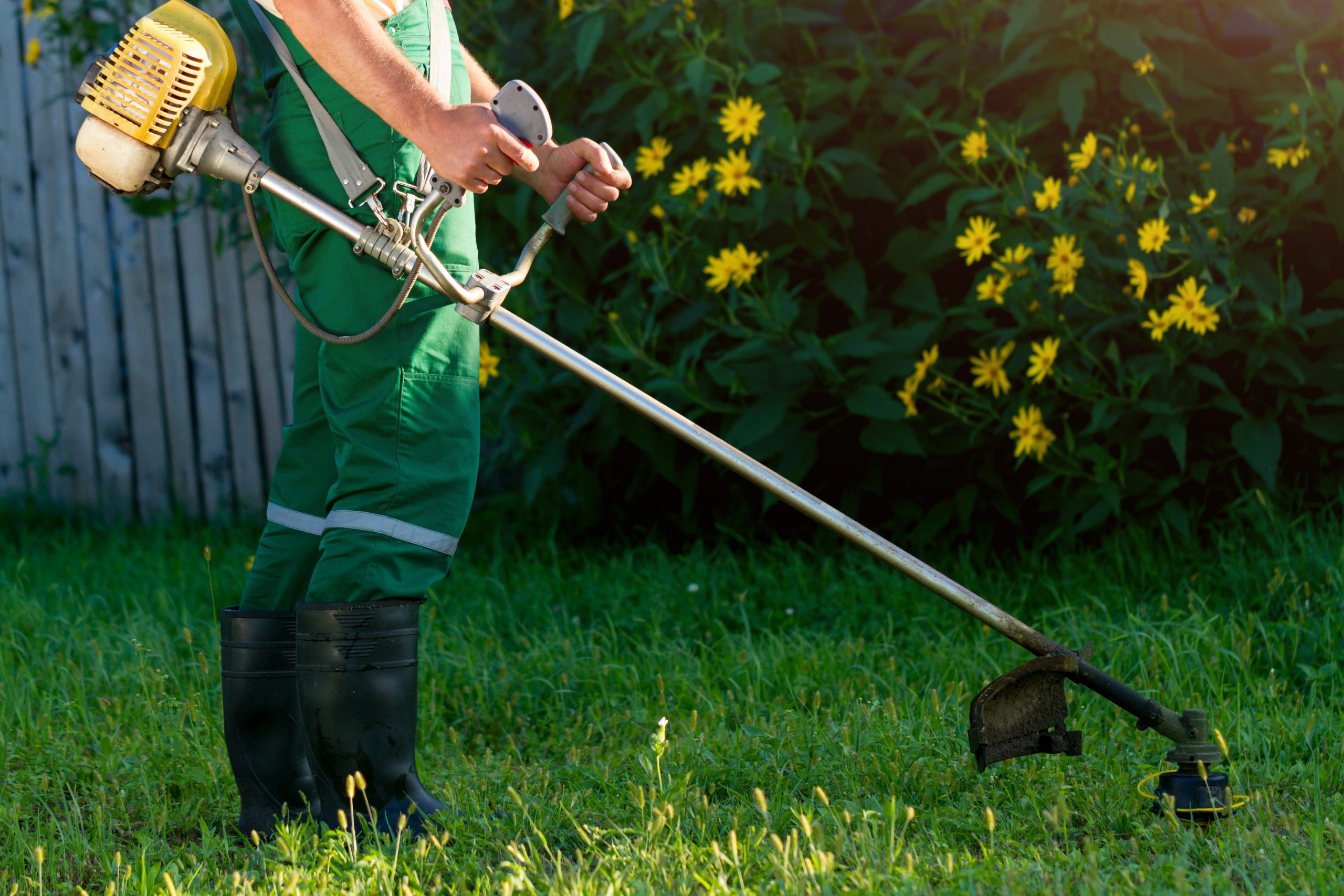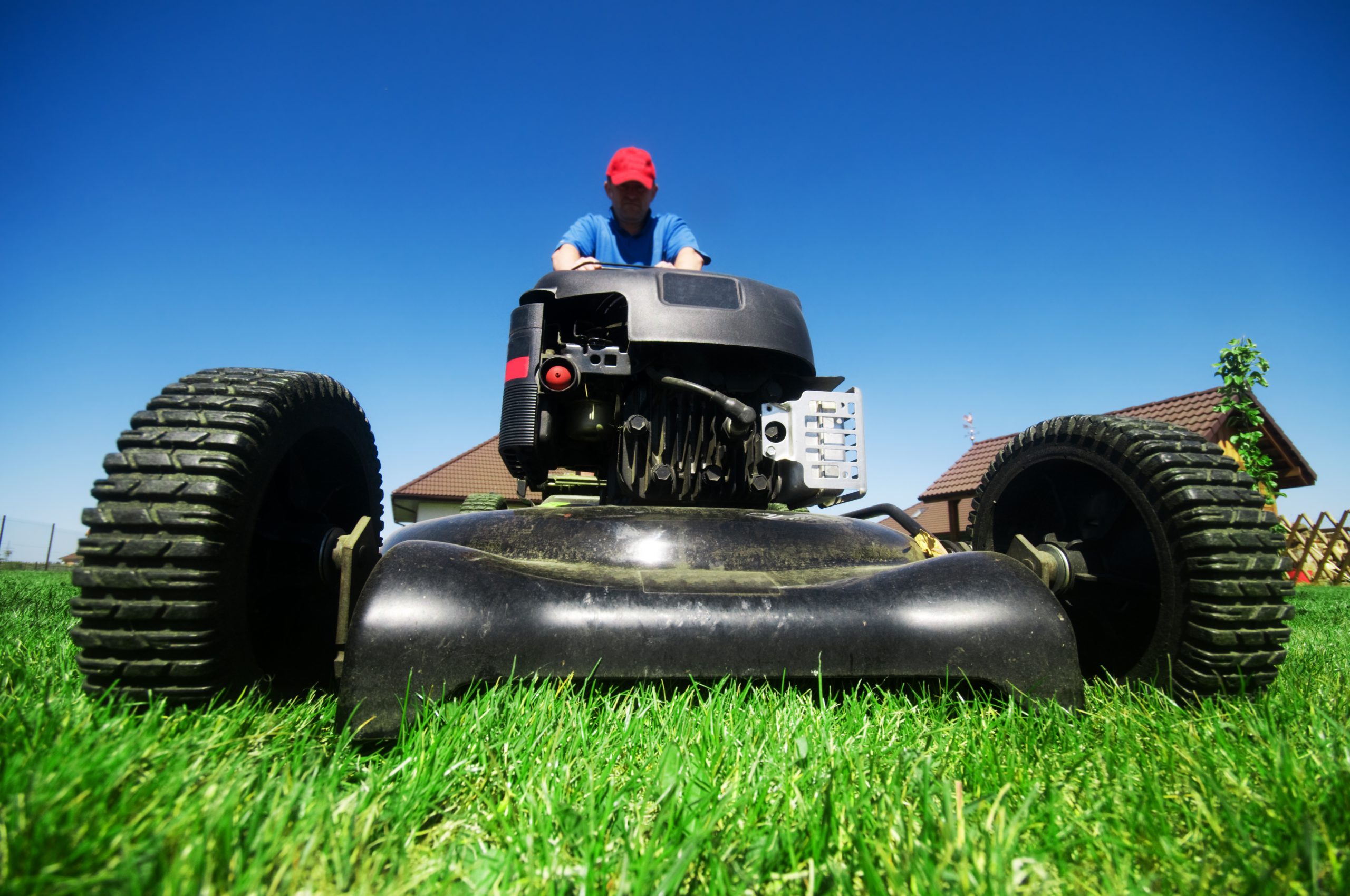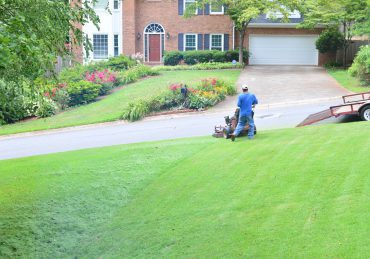When it comes to watering your lawn, it’s essential to balance timing, frequency, and depth for best health. Aim for about an inch of water per week, ideally split into two sessions. In summer’s heat, increase this to two to three times weekly. Water early mornings to reduce evaporation, ensuring the top 6-8 inches stay moist. Understanding your lawn’s unique needs keeps it vibrant. But how do you truly master this art?
The Golden Rule of Lawn Watering: Time, Frequency, and Depth
To achieve a lush and resilient lawn, you should aim for an ideal watering schedule that provides about 1 inch of water per week, split into two sessions for even moisture distribution.
Timing is critical; watering early in the morning reduces evaporation and maximizes absorption, allowing the grass to thrive.
Ideal Weekly Watering Schedule
When establishing the best weekly watering schedule for your lawn, consider the intricate balance of time, frequency, and depth to guarantee the best grass health.
Water your lawn every three days or twice weekly, delivering 1 to 1.5 inches of water. This amount of water promotes deep root growth.
Use a screwdriver to check soil moisture, ensuring the top 6-8 inches are adequately saturated for ideal lawn health.
Easily hire the best lawn & landscape pros working in your neighborhood.
Morning Magic: Why Timing Matters
Although many factors contribute to a lush lawn, the timing of your watering routine stands paramount. Watering in the early morning, before 10 a.m., is the best time of day to minimize evaporation. This guarantees a healthy lawn by allowing blades to dry before nightfall, preventing disease. Deep watering encourages robust roots, enhancing drought resistance.
| Time | Frequency | Depth |
|---|---|---|
| Early Morning | 2-3 times a week | Top 6-8 inches wet |
| Before 10 a.m. | Adjust for temperature | Use a screwdriver |
| Minimize evaporation | Based on soil type | Check moisture |
How Often Should You Water Your Lawn in the Summer Heat?
In the summer heat, it’s essential to recognize signs that your lawn needs water, such as yellowing grass and visible footprints that linger.
To effectively manage hot-weather watering, increase your frequency to three or four times a week, ensuring you apply about 1 to 1.5 inches of water in total.
Watering in the early morning minimizes evaporation and allows moisture to penetrate deeply, promoting healthier root systems.
Signs Your Lawn Needs Water
How do you determine if your lawn is thirsty during the sweltering summer months?
Look for these signs your lawn needs to be watered:
- Color Change: A grayish cast or dull green appearance.
- Footprint Test: Footprints remain visible after walking.
- Blade Condition: Grass blades appear wilted or curled.
- Soil Moisture: The top 6 to 8 inches of soil is dry.
Tips for Hot-Weather Watering
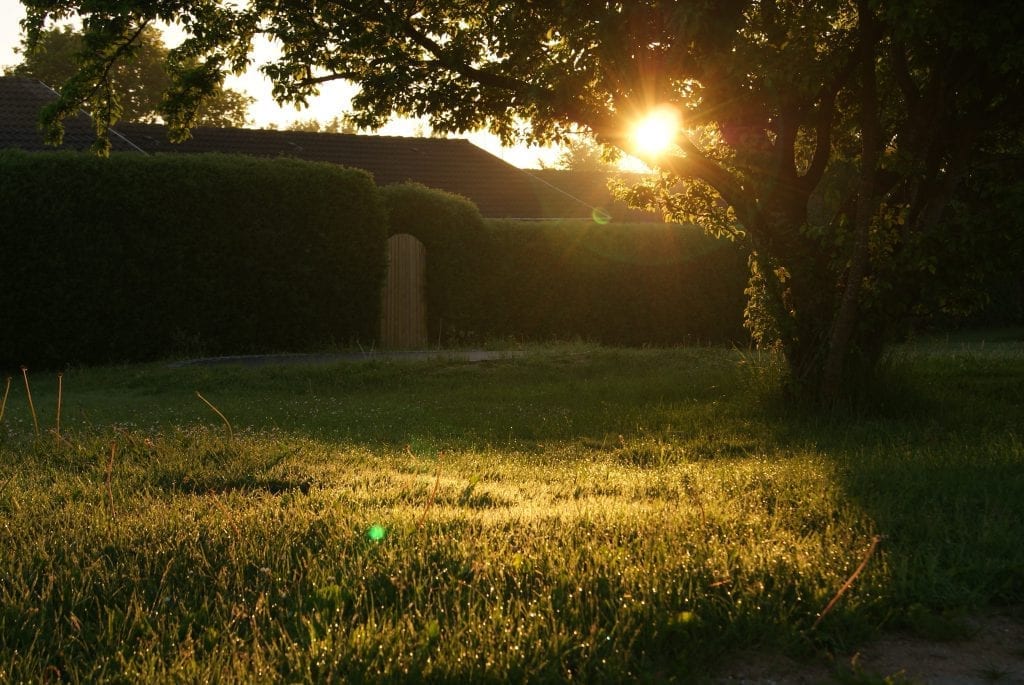
When the summer heat reaches its peak, understanding how often to water your lawn becomes essential for maintaining its health and vibrancy.
Adjust your watering schedule to three or four times a week, especially in hot weather above 90°F.
Deliver about 1 to 1.5 inches of water weekly, ideally in the early morning, ensuring deep root hydration while minimizing evaporation and fungal risks.
Easily hire the best lawn & landscape pros working in your neighborhood.
How Long Should You Water Your Lawn with a Sprinkler?
To determine how long to water your lawn with a sprinkler, start by understanding the output rate of your specific sprinkler system.
Different types of sprinklers, such as oscillating or rotary, have varying flow rates, which directly influence the duration needed to apply approximately 1 inch of water each week.
Use tools like a rain gauge or empty cans to measure how much water your sprinkler delivers over time, allowing you to adjust your watering schedule for ideal grass health.
Sprinkler Output and Timing
While managing your lawn’s hydration, understanding sprinkler output and timing is essential for ideal growth.
Your sprinkler system should deliver about 1 inch of water per week. Here’s how:
- Measure Output: Use empty cans to gauge water distribution.
- Timing: Water early morning to reduce evaporation.
- Session Length: Opt for two 30-minute sessions weekly.
- Adjust for Soil Type: Modify duration based on soil characteristics.
Sprinkler Type Matters
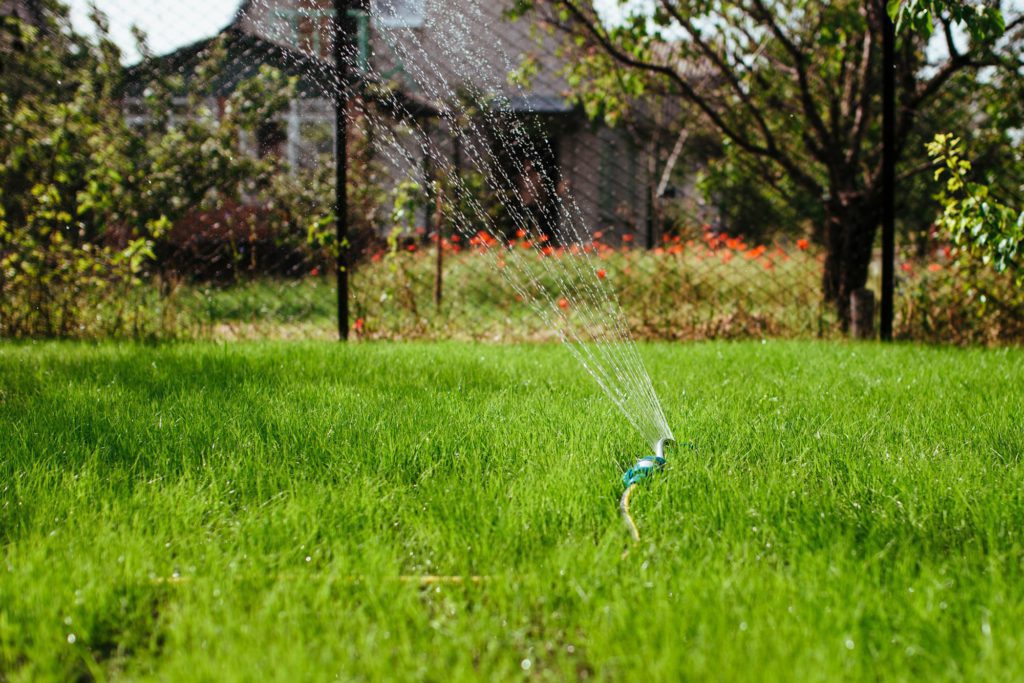
Choosing the right sprinkler type is essential for determining how long you should water your lawn.
Oscillating sprinklers are great for large areas, requiring longer watering durations for even coverage. Fixed spray heads deliver water faster, needing shorter sessions compared to rotary nozzles.
Measure water output with empty cans to guarantee you meet your lawn’s needs, adjusting based on grass and soil type for ideal moisture.
How Long Should You Water Your Lawn After Seeding?
When you’ve just seeded your lawn, focus on keeping the top inch of soil consistently moist to foster seed germination by watering lightly for 5 to 10 minutes, two to three times a day.
As the grass seedlings begin to emerge, shift to a longer, once-daily watering schedule, ensuring the moisture reaches the top 6 to 8 inches of soil.
This adjustment helps the new grass establish deeper roots, preparing it for the standard watering routine once it reaches about 3 inches in height.
Initial Germination Phase
To guarantee successful seed germination, it’s crucial to maintain consistent moisture in the top inch of soil, fostering ideal conditions for seed sprouting and root development.
During the initial germination phase, follow these steps:
- Water lightly 2-3 times daily for 5-10 minutes.
- Adjust based on weather to prevent soggy soil.
- Gradually decrease frequency as seedlings grow.
- Maintain soil moisture without causing seed rot.
Transition to Standard Schedule
As your grass seedlings begin to take root and show promising growth, it’s time to adjust your watering routine to support their development.
Shift to watering deeply, aiming for 1 inch of water per week in one or two sessions. Guarantee the top 2 inches of soil stay moist until the grass is well-established.
Early morning watering maximizes moisture absorption and minimizes evaporation, promoting robust grass health.
Fine-Tuning Based on Grass Type, Soil, and Climate
To optimize your lawn’s health, tailor your watering practices to the specific needs of cool-season and warm-season grasses.
Cool-season varieties like Kentucky bluegrass require consistent moisture, especially during warmer months, while warm-season grasses such as Bermuda grass benefit from less frequent but deeper watering.
Furthermore, consider your soil composition; sandy soils necessitate more frequent watering due to quick drainage, whereas clay soils hold moisture longer and demand less frequent attention.
Cool-Season vs. Warm-Season Grasses
While maintaining a lush lawn, understanding the differences between cool-season and warm-season grasses is pivotal for effective watering practices.
Here’s a quick guide:
- Cool-season grasses need 1-2 inches weekly, increasing frequency in warm weather.
- Warm-season grasses prefer ½-1 inch every 2-4 days in hot months.
- Shaded areas require less watering.
- Adjust for soil type: sandy soils need more frequent watering than clay.
Soil Composition Adjustments
Considering the intricate relationship between soil composition and watering practices is essential for tailoring your lawn care routine to meet the specific needs of your grass.
Soil type dictates watering frequency; sandy soils need more frequent sessions due to fast drainage, while clay soils require less frequent watering because they retain moisture longer.
Adjust your approach based on grass type and climate to guarantee ideal lawn hydration and health.
Easily hire the best lawn & landscape pros working in your neighborhood.
How to Know If Your Lawn Is Getting Enough (or Too Much) Water
To guarantee your lawn receives the right amount of water, start by observing its appearance and physical response.
Look for red flags of overwatering, such as persistent puddles, yellowing grass, and increased weed growth, which indicate excess moisture.
Conversely, signs of underwatering include brown patches, lingering footprints after walking, and dull, wilting blades, suggesting your lawn needs more water.
Overwatering Red Flags
When it comes to watering your lawn, recognizing the signs of overwatering is just as essential as knowing when it’s thirsty.
Your grass needs proper moisture to flourish without excess water. Look for these red flags:
- Yellowing Grass – Signals waterlogging.
- Puddles and Mushrooms – Indicate saturation.
- Mushy Blades – Feel underfoot alerts overwatering.
- Increased Weeds – Thrive in moist conditions.
Underwatering Warnings
If your lawn’s grass appears dull and lacks its usual vibrant color, it might be your first clue that it’s not receiving enough water.
Underwatering warnings include yellow or brown patches and grass blades curling or folding to conserve moisture.
Persistent footprints are another sign, as is difficulty inserting a screwdriver into dry soil.
Grass failing to bounce back after being walked on indicates a need for more water.
Ready to Master Lawn Watering? LawnGuru Can Help
Mastering lawn watering can be a game-changer for achieving that lush, vibrant green lawn you’ve always wanted, and LawnGuru is here to guide you through the process.
To optimize water usage and soil absorption, follow these steps:
- Adjust frequency: Water 1-1.5 inches weekly.
- Monitor soil: Confirm top 6-8 inches remain moist.
- Check weather: Modify based on conditions.
- Observe grass: Look for signs of stress.

